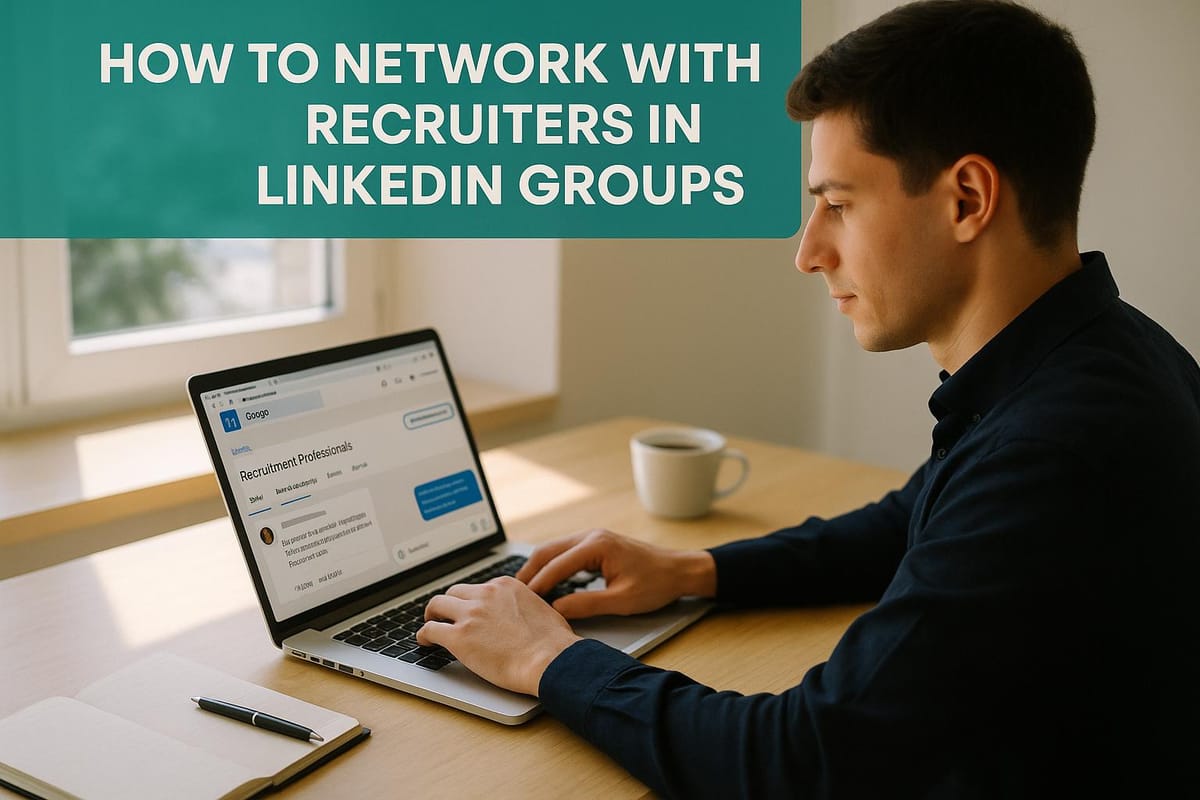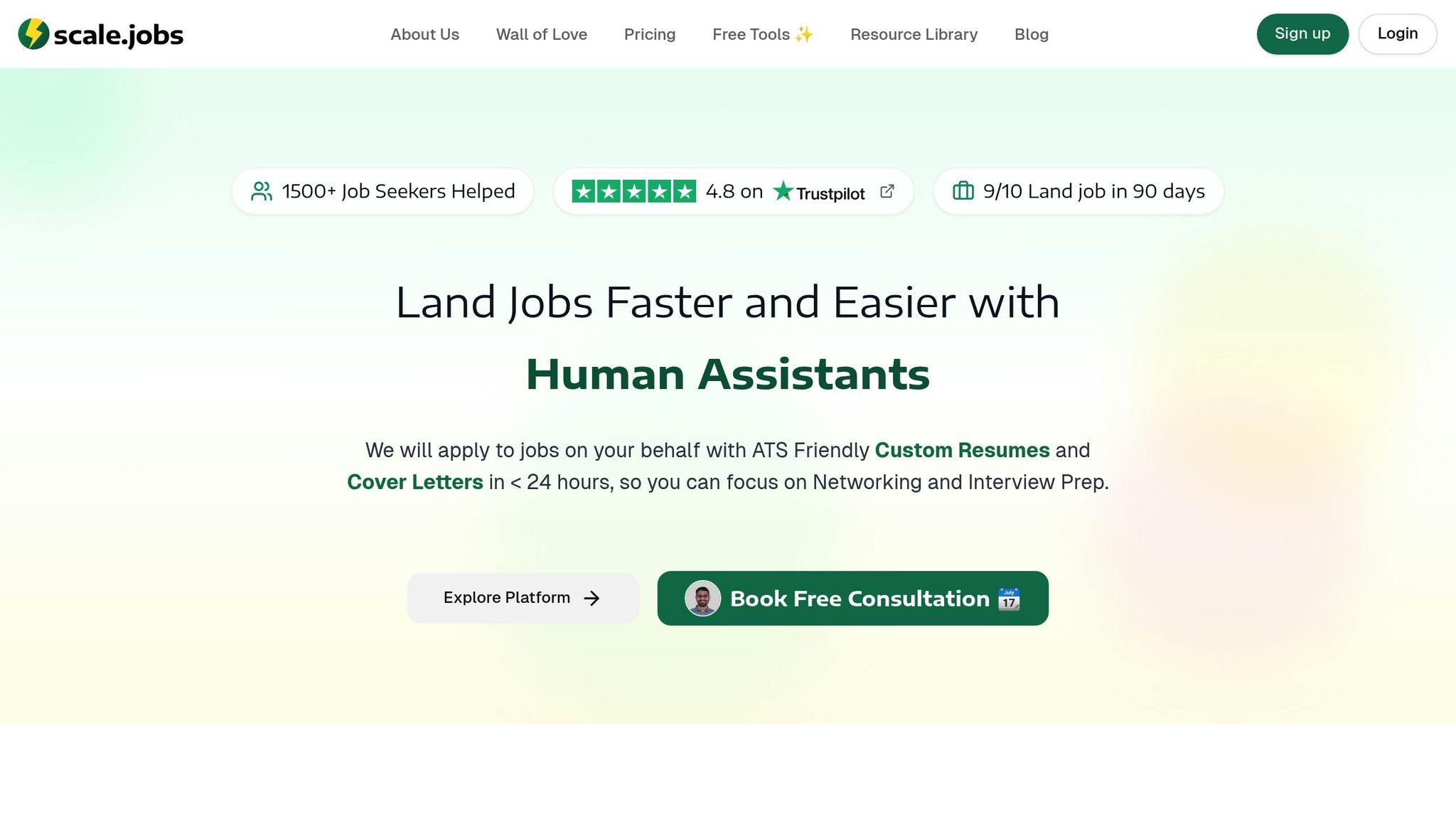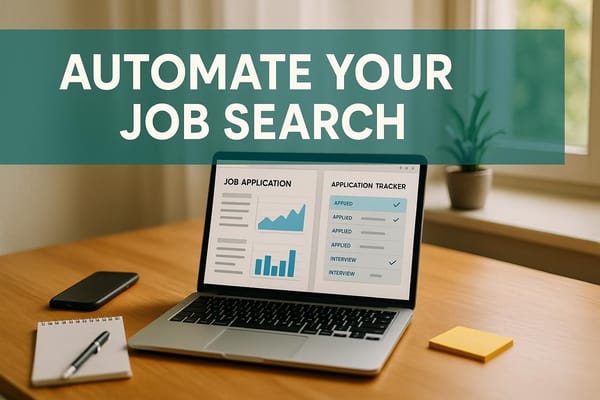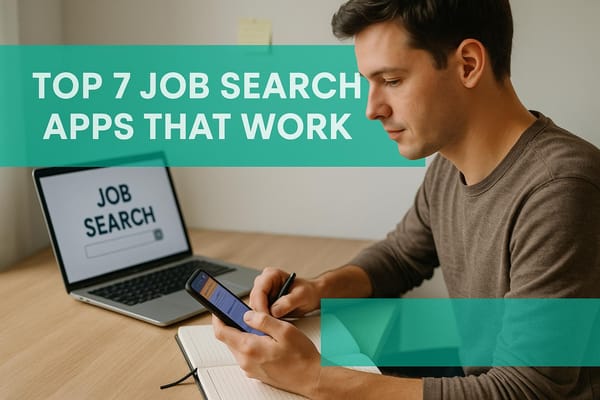How To Network With Recruiters In LinkedIn Groups
Learn effective strategies for networking with recruiters in LinkedIn groups, enhancing your job search and professional relationships.

Networking in LinkedIn groups can help you connect with recruiters and hiring managers effectively. By engaging in discussions, sharing expertise, and building relationships, you can stand out in the competitive job market. Here's how to make the most of these opportunities:
- Polish Your LinkedIn Profile: Use a clear, keyword-rich headline, a concise summary highlighting achievements, and list relevant skills. Ensure your profile is updated, professional, and easy to navigate.
- Join the Right Groups: Look for active, industry-specific, or location-based groups with recruiter participation. Evaluate group activity before joining to ensure meaningful engagement.
- Engage Thoughtfully: Comment on posts with specific insights, share useful content, and participate in discussions to showcase your expertise without self-promotion.
- Build Recruiter Connections: After engaging in group discussions, reach out to recruiters with personalized messages referencing prior interactions.
- Use Job Search Tools: Platforms like scale.jobs can streamline your applications while you focus on networking.
Consistent, meaningful participation in LinkedIn groups can help you connect with recruiters, discover hidden job opportunities, and build lasting professional relationships.
How To Use LinkedIn Groups To Find A Job
Setting Up Your LinkedIn Profile for Recruiter Networking
Think of your LinkedIn profile as your digital business card - it’s often the first impression recruiters have of you. Before jumping into discussions or commenting on posts, make sure your profile is polished and professional. Recruiters frequently check out the profiles of active group members, so having a well-crafted profile can mean the difference between being noticed or overlooked. Start by fine-tuning your headline, summary, and skills to immediately convey your value.
Writing a Clear Headline and Summary
Your headline is one of the first things recruiters see, so make it count. Instead of just listing your current job title, create a headline that highlights your expertise and includes recruiter-friendly keywords.
For instance, instead of a generic title like "Software Engineer at XYZ Company", you could write:
"Full-Stack Developer | React, Node.js, AWS | Building Scalable Web Applications."
This format not only showcases your role but also highlights the technologies you specialize in and the value you bring.
In the summary section, build on your headline by crafting a concise narrative about your career. Focus on your achievements rather than just listing responsibilities. For example, instead of saying, "Managed a team", you could write, "Led a cross-functional team to develop a customer portal that reduced support tickets by 30%." Aim for 3–5 short paragraphs, making it easy for recruiters to quickly understand your background and potential.
Showcasing Relevant Skills and Achievements
While LinkedIn allows you to list up to 50 skills, it’s more effective to focus on the 10–15 most relevant ones for your target roles. Place these at the top of your skills section, ensuring they align with the job descriptions in your field and the keywords commonly used in your industry.
When describing your accomplishments, use the CAR method: Context, Action, Result. For example, a marketing professional might write:
"Launched an email campaign targeting inactive users, leveraging A/B testing to boost engagement by 25% and generate $50,000 in additional revenue."
Additionally, ask for recommendations that validate your expertise. Highlight certifications, online courses, or volunteer work that demonstrate your commitment to growth - like earning a Google Analytics certification or completing AWS training. These details show initiative and adaptability, qualities recruiters value.
Keeping Your Profile Complete and Current
A professional headshot is a must. Choose a photo with good lighting, a simple background, and avoid group pictures or distracting elements.
Keep your profile updated, especially after major career changes, and ensure your contact information is easy to find. Include your email address and, if applicable, your phone number. Adding your city and state is also helpful for location-based searches, particularly for roles that require candidates in specific areas.
Staying active on LinkedIn matters, too. Regularly share industry articles, comment on posts, or engage in discussions to show your ongoing professional involvement. Even a few thoughtful interactions each month can leave a positive impression.
Finally, keep your "About" section aligned with your current career goals. If you’re open to new opportunities, mention the types of roles or industries you’re exploring. This clarity helps recruiters quickly assess whether you’re a match for their open positions. After optimizing your profile, you’ll be ready to dive into LinkedIn groups and expand your networking efforts.
Finding and Joining the Right LinkedIn Groups
Once your LinkedIn profile is polished and ready, the next step is finding groups where recruiters are active and engaged. The goal is to join communities that align with your career aspirations and have real activity, rather than wasting time in groups that feel like ghost towns.
How to Search for Relevant Groups
Start by using LinkedIn’s search bar to look for groups with industry-specific keywords like "software engineering jobs" or "marketing professionals." Pay special attention to group names that include terms such as "jobs", "careers", "recruiting", or "hiring" paired with your field.
When choosing groups, size and activity matter. Look for groups that are active enough to foster discussions but not so massive that your contributions get buried. A quick scan of recent members can give you a sense of the group’s makeup - ideally, you’ll see a mix of professionals, recruiters, and hiring managers.
Industry-specific groups often deliver more value than broad job-hunting groups. For instance, a group centered on digital marketing professionals is likely to offer more targeted opportunities than a general "Job Seekers Network." Location-specific groups can also be a goldmine, especially if you’re focused on a particular city. Recruiters in these groups often post roles tailored to the local job market.
Don’t overlook company-specific or alumni groups either. Many large organizations have unofficial LinkedIn groups where employees and alumni share job leads. University alumni groups are another great resource, as members are often willing to offer referrals or share opportunities within their networks. Once you’ve identified potential groups, take a closer look at their activity levels before diving in.
Evaluating Group Activity and Engagement
Before you hit "Join", take some time to assess a group’s activity and member participation. Active groups tend to have regular updates, but the real test is whether those updates spark meaningful conversations. A group full of posts with no comments or interaction might not be worth your time.
Check the quality of recent posts. The best groups usually feature a mix of job postings, industry news, career tips, and professional discussions. Be wary of groups that feel spammy or are dominated by self-promotion. If the same few members are posting repeatedly without broader engagement, that’s often a red flag.
Look for posts made by recruiters - titles like "Recruiter" or "Talent Acquisition" are good indicators that the group is relevant. Groups moderated by recruiting professionals are especially valuable, as they tend to attract serious job seekers and employers alike.
Lastly, review the group’s rules and guidelines, usually found in the "About" section. Groups with clear rules and active moderation often foster better discussions and a higher-quality membership. Once you’re confident in the group’s value, you’re ready to join and make your entrance.
Joining a Group and Introducing Yourself
After joining a group, spend a few days observing how members interact. This will help you get a feel for the group’s tone and any unwritten rules before you start posting.
When you’re ready, craft a brief but professional introduction. Highlight your expertise and career interests in a way that encourages engagement. For example, instead of simply saying, "Hi, I’m new here", share a bit about your background and what you’re looking to contribute or learn from the group.
When engaging with posts - especially those from recruiters - aim to provide thoughtful comments. If a recruiter shares a challenge or seeks advice, respond with insights from your own experience. This kind of meaningful interaction can set you apart and make you more memorable to recruiters.
Building relationships in LinkedIn groups takes time, so focus on being a consistent and helpful participant. By showing genuine interest and adding value to the community, you’ll naturally create networking opportunities and increase your visibility with recruiters over time.
Connecting with Recruiters in LinkedIn Groups
Once you've joined the right LinkedIn groups, the next step is to engage effectively with recruiters. The goal here isn't to immediately pitch yourself but to build authentic connections. Recruiters can easily spot overt self-promotion, so focus on contributing meaningfully to discussions. This approach not only strengthens your presence in the group but also aligns with a broader and more strategic job search plan.
Adding Value Through Comments
Your comments on recruiter posts often serve as your first impression. When a recruiter shares insights or asks for opinions, respond with thoughtful, well-crafted analysis that highlights your expertise. Avoid generic comments like "Great post!" or "Thanks for sharing." Instead, aim to provide specific, value-driven responses.
For instance, if a recruiter posts about trends in remote work, you could share your experience with particular tools or strategies that have worked for you. Include specific outcomes or results to underline your point. This demonstrates that you not only understand the topic but also know how to apply it effectively.
Engage with other group members as well. If someone shares valuable insights, acknowledge their contributions in your comments. Recruiters notice individuals who contribute to a positive and collaborative group atmosphere, which can make you stand out far more than someone focused solely on self-promotion.
Timing plays a crucial role, too. Comments made within the first few hours of a post tend to gain more visibility. By responding promptly and thoughtfully, you set the stage for further engagement, including sharing your own content to establish yourself as an industry expert.
Posting Relevant Content and Resources
Sharing useful content is another way to position yourself as a knowledgeable and engaged professional. Focus on providing resources that genuinely help group members - whether it's an article, a tool, or lessons from your own experiences.
For example, if you're in software development, you might share insights on how new frameworks are influencing hiring trends or highlight skill gaps you've observed. When you post, include commentary that emphasizes key takeaways and addresses challenges others in the industry might face.
Personal stories and lessons learned can also resonate well. Instead of simply listing your achievements, frame them around the challenges you faced and the insights you gained. This approach not only showcases your expertise but also demonstrates your willingness to help others learn and grow. These contributions can make you more approachable and set the stage for direct conversations with recruiters.
Starting Direct Conversations with Recruiters
Transitioning from group discussions to direct outreach requires a thoughtful approach. The best time to connect with a recruiter is after you've built some rapport through your group interactions.
When reaching out, reference your previous interactions in the group. For example, you could say, "I really appreciated your insights on remote work challenges in the [Group Name] discussion last week. I'd love to continue that conversation and share some strategies that have worked well for me." This not only personalizes your message but also reinforces the connection you've already established.
Avoid sending generic connection requests. Instead, highlight shared interests or perspectives you've noticed during group discussions. Offer value before asking for anything - perhaps by sharing a resource or insight that aligns with their recent posts. This positions you as someone worth connecting with.
Keep your initial message concise and professional. Express genuine interest in their work and suggest a clear next step, like sharing additional resources or discussing industry trends further.
Timing is key. Rather than reaching out immediately after joining a group or after your first interaction, take the time to contribute meaningfully and build a track record of valuable input. This patience often leads to more impactful connections.
According to Scale.jobs, 46% of its users have landed jobs through personal networking and building individual relationships. While tools can handle repetitive application tasks, the human connections you nurture through thoughtful group engagement are often the ones that lead to the best opportunities.
"You should focus on what matters the most - Interview Prep - and let us handle the rest." - Shubham Dhakle, Outcome Manager, Scale.jobs
Using Job Search Tools to Support Your Networking
When you're building genuine connections with recruiters, having the right job search tools can make the process much smoother. These tools take care of tedious tasks, freeing you up to focus on what really matters - building those personal relationships.
Applying for Jobs Efficiently with scale.jobs

Managing job applications can be overwhelming, but scale.jobs simplifies the process by blending advanced AI with human assistance. This combination ensures your applications are handled efficiently, so you can spend more time networking.
The platform's AI Assistant Pro helps you create customized resumes and cover letters with just one click. For example, if a recruiter in your LinkedIn group mentions a job opening, you can quickly tailor your application materials without hours of editing. The AI reviews the job description and adjusts your resume accordingly, making sure it's compatible with applicant tracking systems (ATS).
What makes scale.jobs stand out is its Human Assistant service, where trained professionals manually handle your applications. This avoids issues like bot detection and ensures your application gets the attention it needs - especially when a recruiter refers you to a specific role.
Another perk is the flat-fee pricing model, which eliminates the hassle of monthly subscriptions. Instead, you pay a one-time fee for application bundles, making it a cost-effective option for job seekers who want to focus on networking while applying to multiple positions.
For those navigating visa requirements, scale.jobs offers tailored support. Their human assistants are familiar with visa processes like H1B and F1, ensuring applications address sponsorship needs properly. This is especially helpful when following up on recruiter-recommended opportunities.
Tracking Your Networking and Job Search Progress
Staying on top of your networking and job applications can be tricky, but having a system in place makes all the difference. Scale.jobs offers a Job Applications Tracker that not only logs your applications but also helps you manage your networking efforts.
The tracker integrates seamlessly with your workflow. It automatically records applications submitted through the platform, so you avoid duplicate efforts. Plus, you can add notes about LinkedIn conversations, making it easier to follow up on past interactions.
For real-time updates, the platform uses WhatsApp notifications to keep you informed. For instance, if your human assistant submits an application recommended by a recruiter, you'll get instant confirmation along with time-stamped screenshots as proof.
Scale.jobs also offers unused-credit refunds, adding a layer of transparency. If you land a job before using all your credits, you can get a refund for the remaining applications - something most subscription-based services don’t provide.
The tracker also helps you identify which networking efforts are paying off. You can see which LinkedIn interactions lead to interviews and focus more on the most effective groups and recruiters. These tools not only keep you organized but also make it easier to evaluate scale.jobs against other platforms.
How scale.jobs Compares to Other Job Search Platforms
Unlike platforms that focus on just one part of the job search process, scale.jobs provides a complete solution that complements your networking efforts. Here’s how it stacks up:
- Human-assisted applications: Unlike fully automated services like LazyApply and Simplify.jobs, scale.jobs ensures personal attention to avoid bot detection issues.
- Tailored, ATS-friendly documents: Offers more than resume-only tools like Jobscan.co, with one-click customization for each application.
- Flat-fee pricing: No recurring subscriptions, unlike services like FindMyProfession and TopResume that charge monthly fees.
- Manual application completion: Perfect for networking referrals, unlike fully automated platforms such as Earnbetter and Sonara.ai.
While some platforms rely entirely on automation, this can hurt your personal brand - especially when a recruiter mentions you by name or references a conversation. Scale.jobs bridges the gap by combining automation with human support, ensuring your applications reflect the connections you've worked hard to build.
The philosophy is simple: automation saves time, but human connections land jobs. From personalized WhatsApp updates to human-assisted applications, scale.jobs is designed for professionals who understand the power of networking paired with strategic job applications.
"You should focus on what matters the most - Interview Prep - and let us handle the rest." - Shubham Dhakle, Outcome Manager, Scale.jobs
Conclusion: Building Lasting Connections with Recruiters
Engaging in LinkedIn groups is a smart way to build professional relationships that can benefit your career over the long haul. Successful job seekers know that being consistently helpful and engaging always outshines pushy self-promotion.
Why does this approach work? Because it prioritizes adding value. By sharing insights, answering questions, and engaging meaningfully, you position yourself as someone recruiters are likely to remember. This kind of networking pays off when recruiters reach out with opportunities tailored to your skills.
Spending just 15 to 20 minutes a day engaging in LinkedIn groups can yield better results than sporadic activity. Recruiters notice members who consistently contribute thoughtful input, and those are the individuals they’re more likely to consider for future roles.
Pairing strategic networking with efficient job search tools can give you a real edge. While you focus on building authentic connections, platforms like scale.jobs can streamline your application process. Their human assistants ensure your applications receive personal attention, particularly when a recruiter refers you for a specific role. With their flat-fee pricing model, you can allocate your budget to networking events or professional development, rather than getting tied down by monthly subscriptions. This allows you to focus on what truly matters - building meaningful, reciprocal relationships.
It’s also worth remembering that networking works both ways. The connections you nurture today might lead to job offers tomorrow, but they can also give you the chance to refer talented professionals to recruiters in your circle. This kind of mutual support not only strengthens your reputation but also keeps you in mind for future opportunities.
Your LinkedIn group activity should complement - not replace - other job search efforts. These connections can provide valuable insights into company culture, upcoming positions, and industry trends you won’t find on job boards. When paired with a polished profile and efficient application tools, this multi-faceted approach increases your chances of landing your next role.
While the job market will keep changing, the value of genuine human connections remains constant. The recruiters you connect with today can become lifelong allies, offering guidance and opportunities throughout your career. Treat these relationships as essential career assets, and they’ll serve as a foundation for future success.
FAQs
How can I optimize my LinkedIn profile to attract recruiters in my target industry?
To catch the attention of recruiters in your chosen field, your LinkedIn profile needs to strike the right balance between professionalism and personalization. Start with a clear, concise headline that reflects your industry and highlights your core skills or career aspirations. This is often the first thing recruiters notice, so make it count.
Your summary should be equally engaging - keep it brief but impactful. Use this space to showcase your expertise, key achievements, and what you’re aiming for in your next career move. Think of it as your elevator pitch, designed to leave a lasting impression.
When detailing your experience, focus on accomplishments that align with the roles you’re targeting. Incorporate keywords from job descriptions in your field to boost your profile’s visibility in recruiter searches. Beyond this, consider joining LinkedIn groups relevant to your industry and actively participating in discussions. This not only demonstrates your knowledge but also helps you build valuable connections.
For added efficiency in your job hunt, tools like scale.jobs can be a game-changer. They offer a mix of AI and human support to craft ATS-friendly resumes and cover letters, track applications, and streamline the entire process.
How can I find and join the best LinkedIn groups to connect with recruiters and advance my career?
To connect with the most active and relevant LinkedIn groups that align with your career goals, start by using LinkedIn's search bar. Search for groups tied to your industry, specific skills, or job title. Once you’ve entered your search terms, click on the ‘Groups’ tab to filter your results. This will help you focus on communities where you can network effectively.
When evaluating groups, look for those with a large number of members and regular activity - these tend to offer better networking opportunities. Take a moment to review the group’s description, recent posts, and the level of interaction among members. This will give you a sense of whether the group aligns with your goals and is worth your time.
After joining, take the initiative to introduce yourself with a short, professional post. This is a great way to start building connections. Participating in discussions and sharing thoughtful insights can also help you get noticed by recruiters and other professionals in your field. Networking in these groups can work hand-in-hand with tools like scale.jobs, which combines AI-driven features with human support to make your job search more efficient and effective.
How can I move from group discussions to private conversations with recruiters on LinkedIn without seeming too pushy?
To move from LinkedIn group discussions to one-on-one conversations with recruiters, focus on creating real connections. Start by actively participating in group discussions - share thoughtful insights, comment on others’ posts, and engage in meaningful exchanges. This helps you build trust and show your expertise.
When you're ready to reach out privately, craft a message that’s both professional and personal. Reference something specific from your group interaction, whether it’s a post they shared or a discussion you both engaged in. You could also ask for their advice or their take on a topic within your industry. Avoid making your message all about job requests - this can feel transactional. Instead, aim to start a genuine conversation that could naturally open doors to opportunities.




